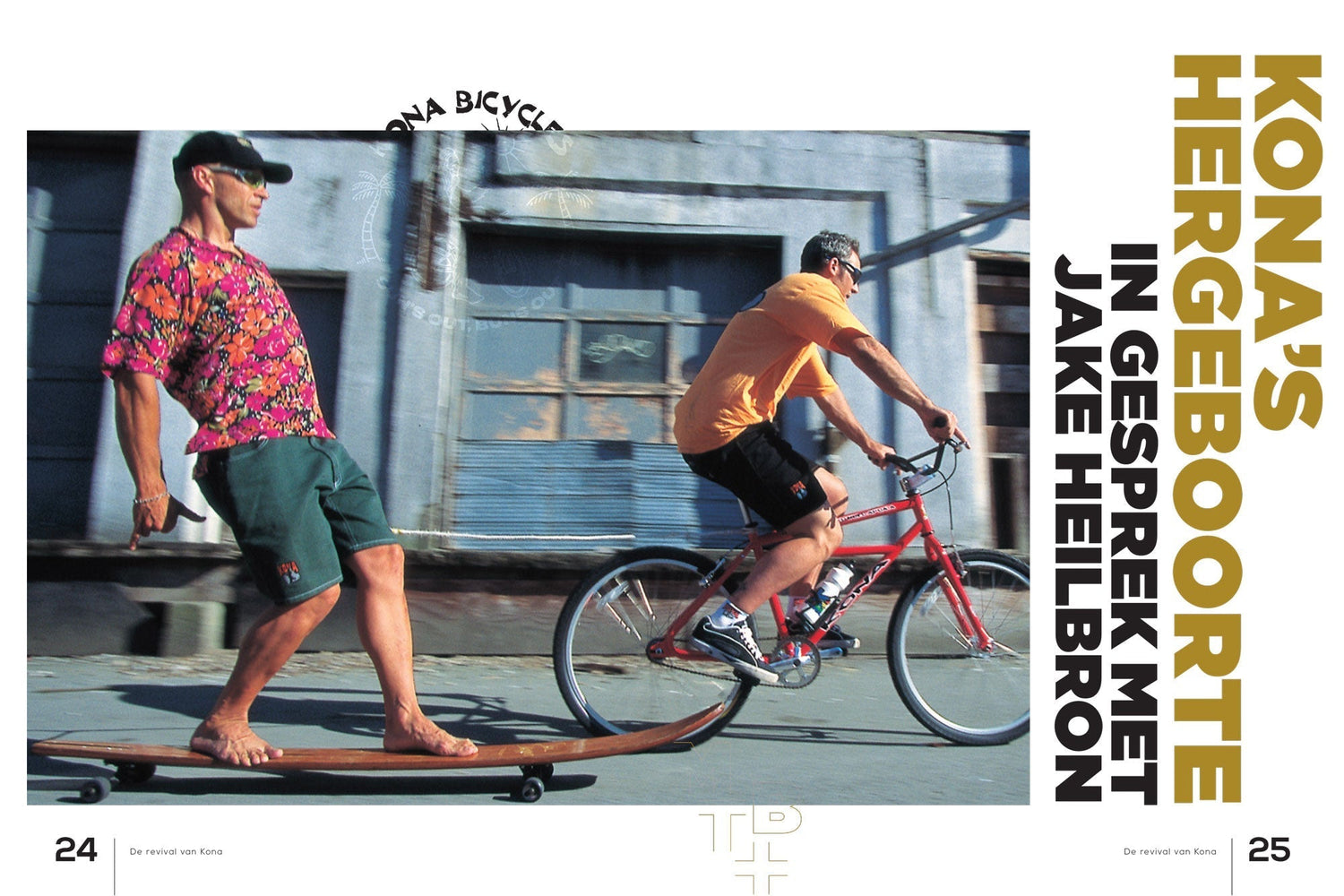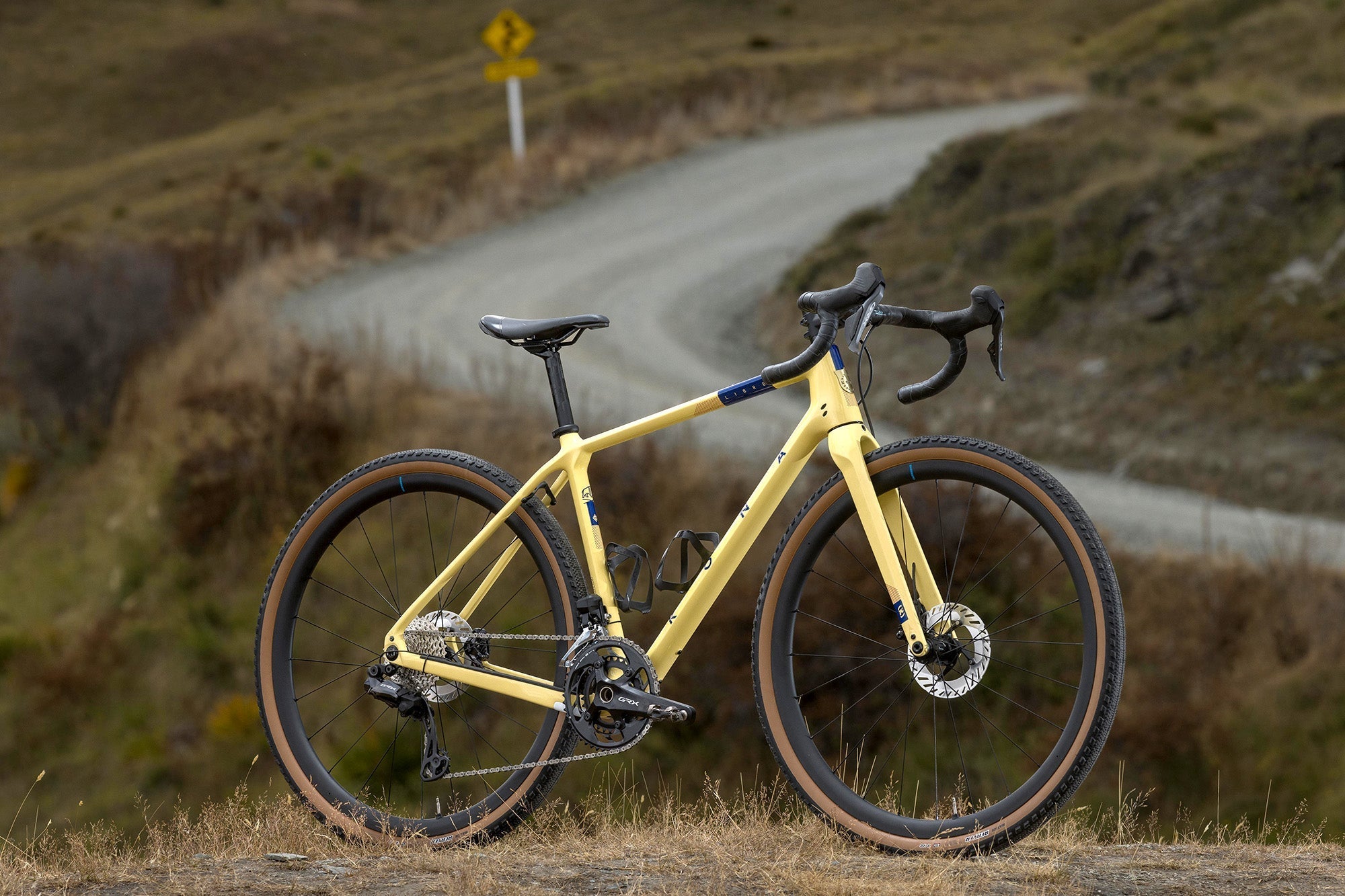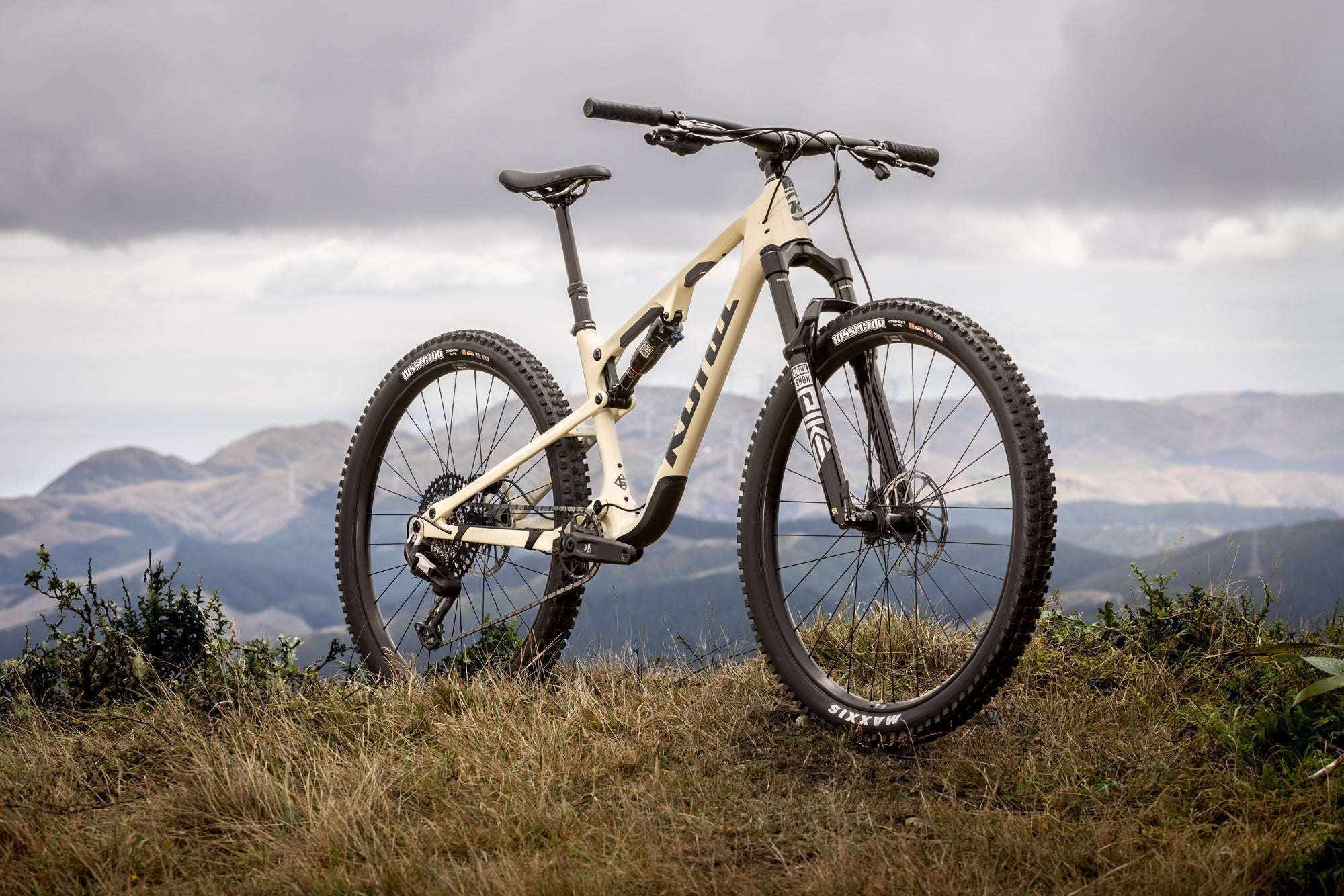Thanks to the magic of Google Translate, this fantastic and insightful interview with Kona founder and owner Jake Heilbron—originally published in Dutch by MTB+ Magazine—is now accessible to all. If you can read Dutch and want to check out the beautifully designed original layout, you’ll find the PDF here. If you’re just here for the words, keep scrolling.

Canadian Kona is etched in my memory from the old mountain bike movies of yesteryear. Movies from the New World Disorder series, with hard music, a very thin storyline and especially bike action that you thought was impossible at the time. The heyday of the freeride scene.
And Kona was right in the middle of it. Still, it is partly due to chance that they started with mountain bikes at Kona, but it would define where the brand would go. Kona grew and with the heyday in the Covid period, the owners decided to sell the company. Kent Outdoors took over the company with the promise to continue Kona's vision. Less than a year later, a new director joined Kent, and the tide started to turn for Kona, until that dramatic moment at the Sea Otter Classic, where the Kona stand suddenly remained empty. What happened at the Canadian brand? We spoke with Jake Heilbron, one of the two founders of the mythical brand and a native Dutchman.
Jake Heilbron:
“I go back so far in this industry that we didn’t even have mountain bikes back then. After I finished high school, I went bike-tripping for a year on a touring bike, which was a completely new thing back then. I rode from Toronto to New Orleans and back to Toronto. It took me eight months. And even then, I still enjoyed riding. I found out that you could ride all year round at the University of British Columbia in Vancouver, and that’s how I started my racing and cyclocross period. Cyclocross was my introduction to off-road riding and that opened me up to all kinds of biking. To be honest, roadies are a little bit conservative and closed off about it, like it’s the only discipline that really matters. That changed in the period after that, with riders like Cadel Evans, Ryder Hesjedal and Tom Pidcock. That crossover in disciplines is great. But anyway, back to cyclocross. I came into contact with the first mountain bikes through a friend of mine. He had bought a bike in Marin County (California) from Gary Fisher. ‘You have to see this’, he said. The penny dropped, and I thought – this is what people want.
Not everyone wants a drop bar with a big gear and narrow tires and that mountain bike opened my eyes. We started riding in Vancouver on the North Shore, with friends from Deep Cove Bike Shop. So I kind of grew up with the mountain bike, in my adult years. I worked in a bike shop at the time that I co-owned and that's how we started Rocky Mountain Bicycles. It was a long time ago and this adventure only lasted 5 years, but it was the first real steps for us with Rocky Mountain and the distribution of Ritchey outside the United States. After that followed a few more years working for Tom Ritchey in the Silicon Valley area. From then until now, most of my riding time has been spent on the mountain bike. Actually, up to this day, because I've decided that I don't want to break any more bones.
Mountain biking has changed so much. Back then, we mainly kept our wheels on the ground. Today, we fly high through the air and ride on trails that we never thought possible. I think these developments in mountain biking are fantastic. It has grown in so many directions. Even now, it can be wonderfully mild, to completely insane and just super beautiful as a sport. And that development is still continuing. The trails have become so much more technical, the athletes much more capable. The competitive sport is super interesting as a spectator.
The beginning of Kona.
When we started Kona in 1988, we only sold mountain bikes here. Nobody wanted a road bike, or a city bike, here in North America anyway. So, Kona started making mountain bikes. I started Kona with Dan Gerhard, who I also worked with at Rocky. I was the talker, Dan the salesman. Joe Murray was also on board, who worked for Marin Bikes. Joe is also a great mountain biker and is very smart. And that's how Kona was born. It wasn't until about 15 years ago that we started other bikes as a brand. Cyclocross, city bikes and now also gravel. But Kona is still a real mountain bike brand and that is reflected in the people in our company. That's where their passion lies.

From rigid to freeride.
It all started with cross-country oriented mountain bikes at Kona. Without front or rear suspension, focused on the races of the time. But the company grew with the sport and Paddy White, who still works for Kona today, was the one who pushed the brand further. He was crazy about all kinds of bikes, but also about motorsports. And from there he was the one who started to push Kona towards suspension. With the ‘long travel’ bikes of that time, with 140mm of suspension, Kona’s were at the start of the Kamikaze race in Mammoth. World Cups were ridden on the bikes. And the interest in these mountain bikes in Europe grew.
We had already done something with Tomy Misser in Spain. The results were there. Then our European office asked ‘why don’t we put some gears on it, so we can ride uphill’? And that's how the Kona Stinky was born in 1998. And that's when the sport started to gain momentum and we as a brand were right in the middle of it. The North Shore, with its steep, technical trails. Wet, roots, you name it. There was construction, wooden scaffolding and bridges, drops, everything was there. And we simply had to have something that wouldn't break on this. Because the XC stuff from back then was dying. And so we were suddenly right in the middle of that beautiful mountain bike sport.”

The business side.
If there is one common thread within the bicycle industry, it is the common denominator of passion. Kona also originated and grew from the love of cycling. The business side followed. Together with Dan Gerhard, and from 1995 the European partner Jimbo Oldstrom, the company continued to grow. Jimbo and Dan slowly started talking about retirement during the pandemic. Something that Jake Heilbron had not yet thought about.
“At the beginning of the Covid pandemic, we thought ‘man this is going to be big’. We didn’t know how long it would last, but it was certain that it would be big. And cycling was the perfect sport for that time. As long as the government didn’t force us to close our business, we could profit from this boom. That business thinking is something that has grown. We learned it by doing it. But we did realize then that if we wanted to sell our business, this was the best time. That may sound very businesslike, or greedy, but it seemed to us the most logical choice at the time.”
Kona had discussions and soon they sat down with Kent Outdoors. Ken Meidell, CEO at the time, was a bike fanatic. Our colleagues at Kona were positive and clearly said that they could work well with this party. But a year later he was gone and his successor felt little love for our sport. In the meantime, Dan and Jimbo had already left the company, but I (Jake) was still there. I never left.” The events after Covid followed each other at a rapid pace. Just like with many other brands, there was suddenly a large stock of bikes. And then, last year, there was suddenly panic. The Kona stand remained empty and there were rumors. Kent Outdoors wanted to get rid of Kona. Would this be the end of the brand?
“To say that it doesn’t make sense to buy back your own brand is an understatement I think. Early on in conversations with Kent Outdoors it seemed to be going in the right direction and everything started to move very quickly. Kona was on the ground and the company was not the way it was before the acquisition. People had been let go from the product and marketing departments that were extremely important. The US sales team had been laid off and they had been fully committed to a ‘direct to consumer’ brand. That wasn’t the case in Canada and Europe, but there was plenty to rebuild for us.”
After that turbulent period, the reconstruction of Kona began. New bikes were introduced, such as the G3 series, the Ouroboros gravel bike and a two e-bikes. Internally, people who had left the company were hired again and work was done on (re)building the dealer network and selling stock. Slowly but surely, Kona is recovering from its precarious position.
“It feels really good to be able to say that we have been able to hire people who are so important to us again. They know how everything works, what Kona is, are good at their jobs and simply know every screw and bolt of our company. In addition, we have also hired new people and we are positive about where we are and that we can turn this around. With the help of all our people, who are very smart and work hard, we will get there. But we are not there yet.”
The decision to buy back a company that is in trouble is not without risk. For Jake and Dan, it was a matter of principle. Who is crazy enough to buy a company in the bicycle industry in this day and age? This duo. The reasons behind it are diverse, but the fact is that the duo cares about their company, their customers and their suppliers.

“Our original factory is a family-owned business that is now run by the two sons of the founder of the factory. The two factories in Taiwan have taken a beating. Seeing that hurts. And letting things go in this way didn’t feel right. There is no financial gain for us in the short and medium term with this move. We still have years of work to get Kona back to where we were. But this is a matter of doing the right thing and pulling Kona out of the valley.”
The customer reactions to the news were sometimes almost euphoric. Emails came in from those whose first bike was a Kona, or who raced on a Kona. That involvement and that feeling is something the Kona team wants to cherish. From dealer to customer, the trusted customer service of the past and a company that is solid and will still be there the day after tomorrow. Kona will once again be a company with a heart, that loves its dealers and everyone who rides a bike.
“This has always been our thing. It is something personal, from relationships to cycling. If you are purely business-minded about this, I think it is difficult to understand what cycling is really about. I certainly would not know how to do that myself. It is not in my DNA.”
A passionate team is working hard on Kona. The old-fashioned way, where it is about meetings and developing beautiful bikes. It has been a hard lesson, but hopefully one that can serve as an example for other brands in dire straits. Not everything has to be about maximum return and not everything has to be viewed purely business-wise. Putting your heart and soul into your product can make a world of difference. Kona’s goal? “We are going to succeed by becoming the biggest small bike company in the world.”



